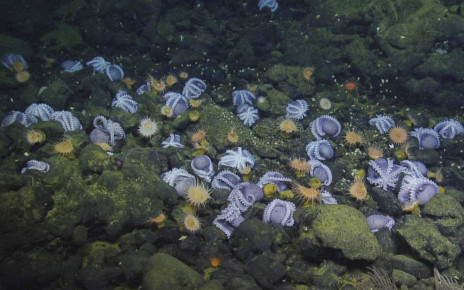[ad_1]

Some German cockroaches have changed their mating strategy
mauritius images GmbH / Alamy Stock Photo
Some cockroaches have evolved a distaste for the glucose used in poisonous baits – and male cockroaches have adapted their mating strategy as a result, in a case of natural selection and sexual selection having linked effects.
Male cockroaches secrete a few drops of sugary fluid on their backs to entice females to mate with them. While the female mounts him and eats the “nuptial gift”, the male then slips his genital hook into her, locking her into place for 90 minutes of copulation.
However, females that are averse to glucose refuse the sugary gifts, so some males have now started secreting a new formula and hooking the females faster, says Ayako Wada-Katsumata at North Carolina State University, in Raleigh.
“It’s amazing that a single change in taste sense can stimulate the evolution of both foraging strategy and sexual behaviours,” she says.
Pesticide manufacturers often mix corn syrup – which is rich in glucose – into their baits to mask the bitterness of the poison. Thirty years ago, researchers discovered that cockroaches in Florida were avoiding commercial baits because they had become aversive to glucose.
In 2013, Wada-Katsumata and Coby Schal, also at North Carolina State University, tested the cockroaches’ neurons and found that the glucose-aversive individuals actually perceived the glucose itself as bitter.
Curious about whether that evolutionary adaptation has affected the way females respond to males’ sweet nuptial gifts, Wada-Katsumata, Schal and their colleagues video-recorded 251 pairs of German cockroaches (Blattella germanica) in the laboratory. The cockroaches included some from a population in Florida that has developed glucose aversion, and another that has not.
The researchers found that glucose-aversive females quickly stopped feeding on the nuptial gifts of males from the non-glucose-aversive population, and they did not mate with them. But they fed on the secretions of males from the glucose-aversive population long enough for them to successfully lock their genitals.
The team also found that these males were locking into the females within 2.2 seconds of the female starting to feed, as opposed to the normal range of 3.3 to 3.9 seconds.
Analyses of the secretions revealed that those from the non-glucose-aversive group contained five times more glucose than those from the glucose-aversive group. They also contained more maltose, a sugar that breaks down into glucose within seconds when exposed to saliva.
The males from glucose-aversive groups, by contrast, had secretions made mostly of maltotriose – a complex sugar that breaks down into glucose after about five minutes in saliva.
This means that by the time the female can taste the glucose that she dislikes, it’s too late, Schal says. “She might get a bitter aftertaste, but it doesn’t matter. She’s been engaged in copulation, and she will engage in it for 90 minutes. There’s no escaping.”
The findings provide a clear case of the link between natural selection and sexual selection, which is often hard to demonstrate in biology, says Wada-Katsumata. “I think the glucose-aversive cockroach system is a good example to understand the evolution of animal behaviour.”
Topics:
[ad_2]
Source link




